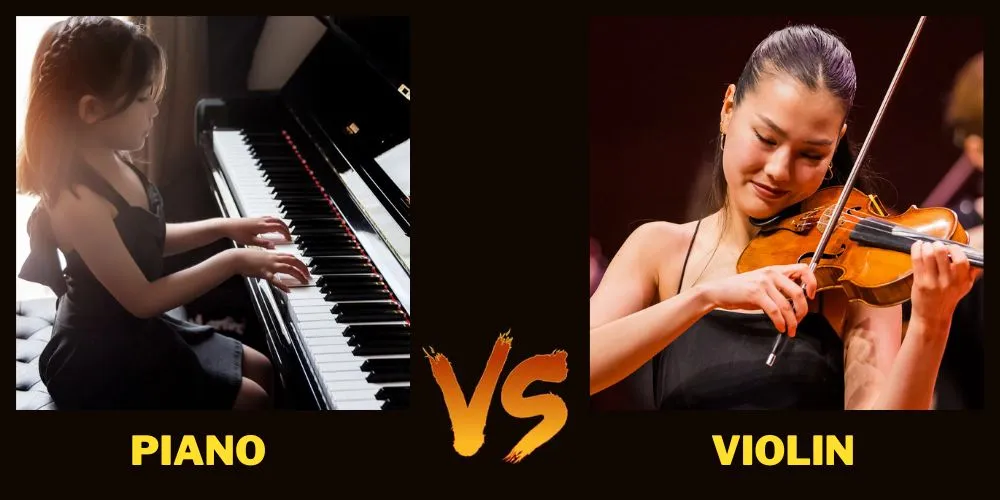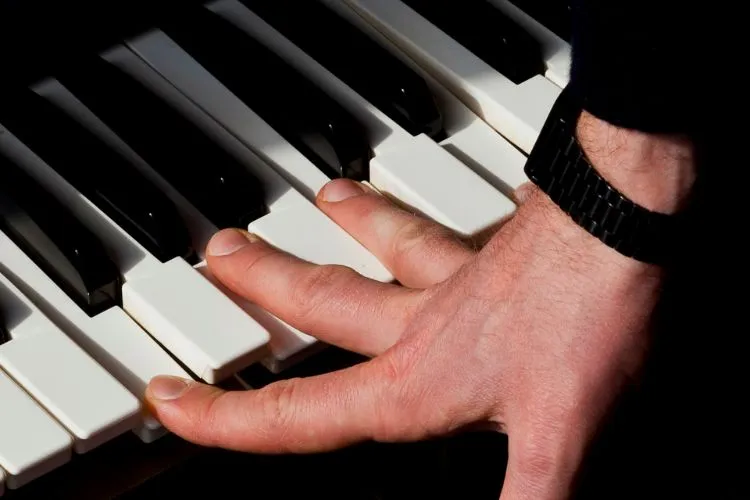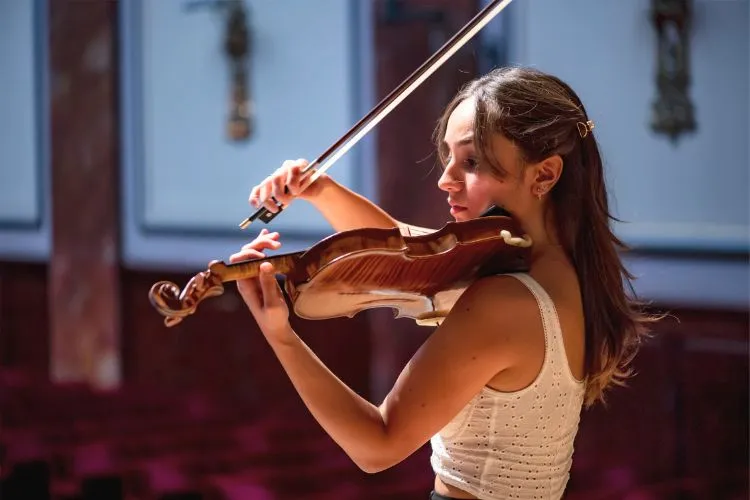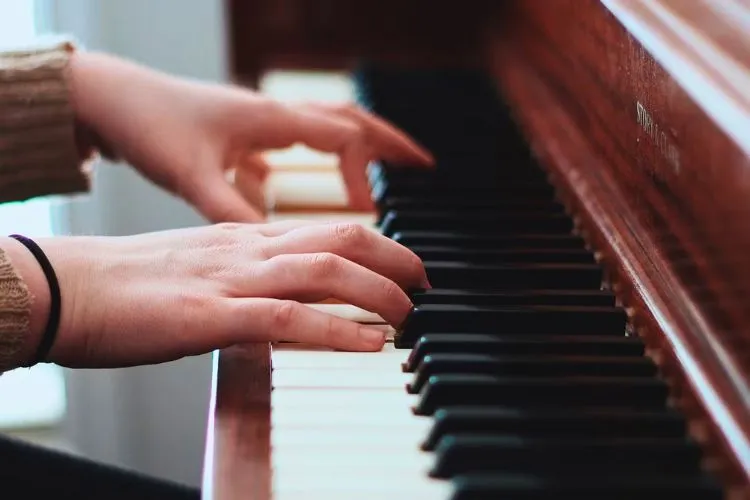When you step into the world of music, choosing the right instrument is the first melodious note you’ll play.
The piano and violin represent two of the most classic choices, weaving their distinctive sounds into the tapestry of many musical genres.
But as a music enthusiast standing before the crossroads, the debate remains: piano vs violin, what to pick?

Contents
🎶Characteristics of Each Instrument
Piano
The piano, an instrument dating back to the early 18th century, holds a reputation for its broad range and versatility. Its keyboard with black and white keys outlines an intuitive, visual map of notes that can attract beginners.

The layout aids in understanding fundamental concepts of musical theory. A standard piano spans over seven octaves, providing a grand spectrum for composers and performers alike.
The learning curve for the piano is friendly at the start. Beginners can produce clear notes from the get-go by pressing keys, unlike many instruments that require mastering breath control or hand positioning to articulate a single note.
This immediate gratification of sound makes the piano an approachable starter instrument.
Additionally, the piano lays the foundation for grasping harmony, as players can play chords and melodies simultaneously.
Violin
In contrast, the violin, with its roots in the 16th century, is admired for its soul-stirring tone and expressiveness. This string instrument is synonymous with orchestras but is equally at home in folk and pop music.

Playing the violin involves coordination between right hand bowing techniques and left hand finger positioning which, unlike the piano’s immediately rewarding sounds, might initially challenge learners.
Despite a potentially steeper path to proficiency, the violin offers unparalleled opportunities for emotional expression. Its resonant voice can emulate a wide range of human emotions, from the delicate to the fiery.
Mastery over time affords violinists the chance to convey a personal touch through subtle variations in sound that few other instruments can match.
🎶Piano vs Violin: A Comprehensive Guide
Selecting between these two instruments is not solely a choice of sound but one of lifestyle and aspiration.
Age and Physical Factors
The piano’s size and key resistance might pose challenges for extremely young children, whereas the violin comes in various sizes, making it more accommodating.
However, the violin demands a level of fine motor skills and coordination that may be challenging for young learners.
Musical Goals
Aspiring musicians should consider their long-term musical goals. If you dream of joining an orchestra or a string quartet, the violin offers a clear pathway.
In contrast, if you’re enamored by the prospect of being a versatile solo performer or an ensemble leader, the piano might be the better choice.
Practical Considerations
The space a piano occupies can be substantial, and the instrument typically requires a fixed location.
Violins, being portable, offer more flexibility. In terms of budget, upfront costs for pianos are usually higher than for violins, and maintenance such as tuning adds to the long-term expenses.
🎶Learning and Mastery
Reaching proficiency on any musical instrument is a rewarding journey that requires dedication. Pianists must manage multiple musical lines and become adept with both hands, while violinists focus on refining their tone and intonation.
Availability of learning resources is vital. Piano teachers and resources are abundant, reflecting the instrument’s popularity.
Violin resources are less widespread but still accessible. Importantly, both instruments boast active communities, offering guidance and support to learners and enthusiasts.
🎶Pros and Cons
Each instrument has its pros and cons – pianists have the advantage of a more straightforward initial experience, whereas violinists face initial hurdles with bowing and finger placement.
The piano shines in its ability to facilitate a deep understanding of complex musical concepts, whereas the violin is exceptional in its expressive capacity.
🎶Personal Stories and Testimonials
Insights from musicians who have walked this path are invaluable. Many pianists recount the joy of instantly creating beautiful sounds and the long-term satisfaction of mastering diverse musical repertoire.
Violinists often speak of the personal attachment to their instrument and the nuanced expressiveness they’ve developed over years of practice.
🎶Understanding the Role of Music Theory
Music theory forms the bedrock of musical understanding, and its relevance is pronounced for both piano and violin learners.
For pianists, the visual layout of the keyboard provides a clear illustration of theoretical concepts such as scales, intervals, and chords. As students see and play these patterns, they can readily grasp the structural aspects of music.

Violinists, while not privy to an overt visual roadmap, benefit significantly from music theory to navigate their fretless fingerboard. Theory aids in understanding pitch relationships and positioning for accurate intonation.
Both instruments rely on a sound theoretical foundation to interpret music notation, rhythm, and dynamics effectively.
Thus, while the application of theory differs—being more visually accessible on the piano and more tactile and auditory on the violin—its study enriches the learning process, enhancing the player’s ability to perform with precision and expressiveness on both instruments.
🎶Investment in Time: Practice and Progression
For beginners on both piano and violin, a consistent practice schedule is crucial for steady progression. Typically, a minimum of 30 minutes to an hour daily is recommended for beginners.
For the piano, early stages involve familiarizing oneself with the keyboard, basic chords, and simple melodies. Similarly, violin beginners focus on bow holds, simple scales, and open string exercises to cultivate proper technique and sound production.
Progress in both instruments is a product of dedication and regular practice, with noticeable improvements often seen within a few months.
Patience and persistence are key, as skills develop incrementally. Mastery comes over time, built on daily commitments to practice, leading to increasingly complex playing capabilities and deeper musical understanding.
🎶Frequently Asked Questions (FAQs)
While the piano may have a more forgiving learning curve, ease depends on individual aptitude and preference.
The violin generally involves less initial financial investment, but both instruments can incur costs with advancements in training and equipment.
While it’s possible to learn both simultaneously, each requires considerable focus and practice, which may be challenging to balance.
Conclusion:
The choice between piano and violin is a personal one, influenced by your physical nuances, musical preferences, and practical considerations.
Regardless of the instrument you choose, the worlds of piano and violin are rich with opportunities for growth, expression, and enjoyment. Reflect on what resonates with you, and let your love for music guide your decision.
